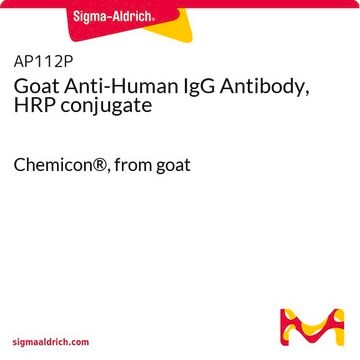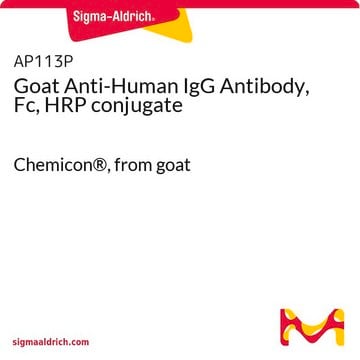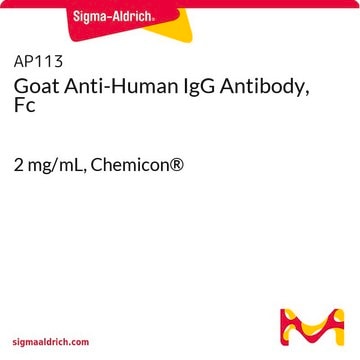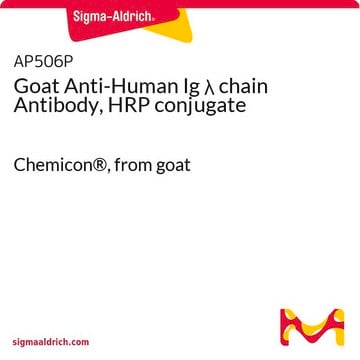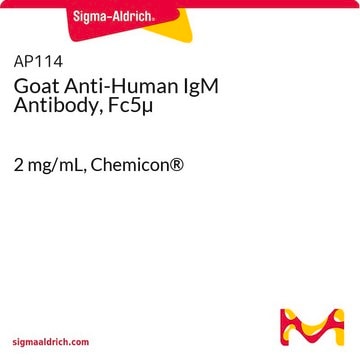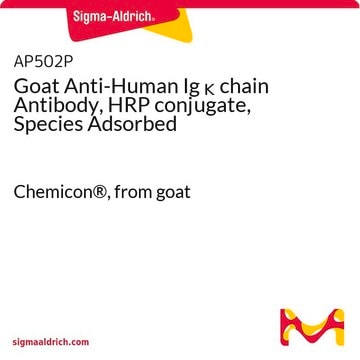AP309P
Goat Anti-Human IgG Antibody, HRP conjugate
1.0 mg/mL, Chemicon®
About This Item
Productos recomendados
origen biológico
goat
Nivel de calidad
conjugado
peroxidase conjugate
forma del anticuerpo
affinity purified immunoglobulin
tipo de anticuerpo
secondary antibodies
clon
polyclonal
formulario
lyophilized
reactividad de especies
human
fabricante / nombre comercial
Chemicon®
concentración
1.0 mg/mL
técnicas
ELISA: suitable
western blot: suitable
isotipo
IgG
Condiciones de envío
wet ice
temp. de almacenamiento
2-8°C
modificación del objetivo postraduccional
unmodified
Categorías relacionadas
Descripción general
Especificidad
The reagent is an affinity purified antibody from goat. The purified antibody is conjugated to horseradish peroxidase (HRP) and stabilized in buffer.
Aplicación
Immunohistochemistry: 1:200-1:500 (1-4)
Immunocytochemistry: 1:200-1:500 (1-4)
Western Blot, chromogenic: 1:200-1-500
Western Blot, chemiluminescent: 1:2,000-1:5,000
Optimal working dilutions must be determined by the end user.
Acciones bioquímicas o fisiológicas
Forma física
0.01M PBS, PH7.1, with 15mg/mL BSA
Almacenamiento y estabilidad
Información legal
Cláusula de descargo de responsabilidad
Not finding the right product?
Try our Herramienta de selección de productos.
Código de clase de almacenamiento
13 - Non Combustible Solids
Clase de riesgo para el agua (WGK)
WGK 3
Punto de inflamabilidad (°F)
Not applicable
Punto de inflamabilidad (°C)
Not applicable
Certificados de análisis (COA)
Busque Certificados de análisis (COA) introduciendo el número de lote del producto. Los números de lote se encuentran en la etiqueta del producto después de las palabras «Lot» o «Batch»
¿Ya tiene este producto?
Encuentre la documentación para los productos que ha comprado recientemente en la Biblioteca de documentos.
Los clientes también vieron
Nuestro equipo de científicos tiene experiencia en todas las áreas de investigación: Ciencias de la vida, Ciencia de los materiales, Síntesis química, Cromatografía, Analítica y muchas otras.
Póngase en contacto con el Servicio técnico